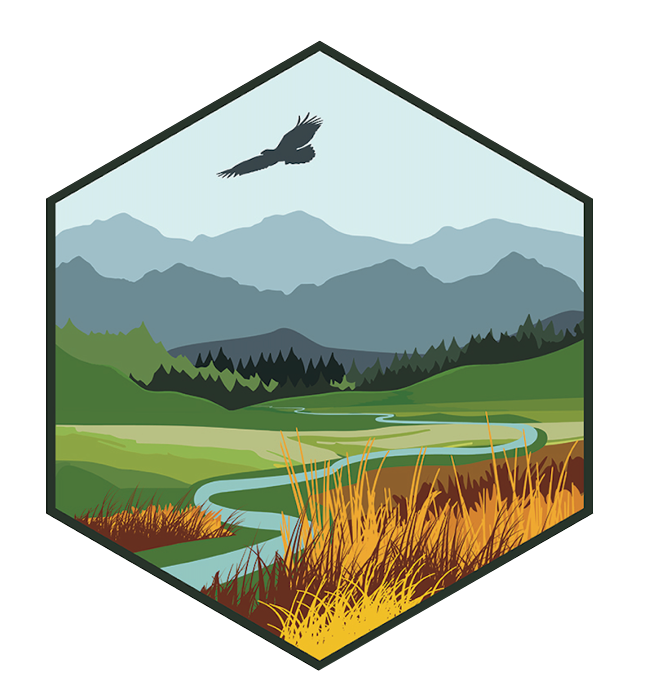Abstract (from http://econpapers.repec.org/paper/agsaaea16/235895.htm): We evaluate the regional-level agricultural impacts of climate change in the Northern Great Plains. We first estimate a non-linear yield-weather relationship for all major commodities in the area: corn, soybeans, spring wheat and alfalfa. We separately identify benevolent and harmful temperature thresholds for each commodity, and control for severe-to-extreme dry/wet conditions in our yield models. Analyzing all major commodities in a region extends the existing literature beyond just one crop, most typically corn yields. Alfalfa is particularly interesting since it is a legume-crop that is substitutable with grasses as animal feed and rotated with other row-crops for nitrogen-fixation of soils. Our model includes trend-weather and soil-weather interaction terms that extend the existing yield-weather models in the literature. Results suggest that temporal adaptations have not mitigated the negative impacts of weather stressors in the past, and that the spatial soil profile only weakly influences weather impacts on crop yields. We estimate yield-weather elasticities and find that historical weather patterns in the region have benefited corn and soybeans (spring wheat) the most (least). We expand our analysis to formally evaluate the role of short-run weather fluctuations in determining land-use decisions. We utilize decomposed crop yield estimates due to trend and weather in order to model crop acreage shares. Our preliminary results suggest that short-run weather fluctuations are an important factor for decisions on soybeans and spring wheat shares, however only yield trends drive corn shares.
Members of the Eastern Shoshone and Northern Arapaho Tribes have been working with an interdisciplinary team of social, ecological, and climate scientists from the North Central CSC, the High Plains Regional Climate Center, and the National Drought Mitigation Center along with other university and agency partners to prepare regular climate and drought summaries to aid in managing water resources on the Wind River Reservation and in surrounding areas.
The potential influence of seed bank composition on range shifts of species due to climate change is unclear. Seed banks can provide a means of both species persistence in an area and local range expansion in the case of increasing habitat suitability, as may occur under future climate change. However, a mismatch between the seed bank and the established plant community may represent an obstacle to persistence and expansion. In big sagebrush (Artemisia tridentata) plant communities in Montana, USA, we compared the seed bank to the established plant community. There was less than a 20% similarity in the relative abundance of species between the established plant community and the seed bank. This difference was primarily driven by an overrepresentation of native annual forbs and an underrepresentation of big sagebrush in the seed bank compared to the established plant community. Even though we expect an increase in habitat suitability for big sagebrush under future climate conditions at our sites, the current mismatch between the plant community and the seed bank could impede big sagebrush range expansion into increasingly suitable habitat in the future.
We assessed the vulnerability of ecological processes and vegetation to climate change in the US Northern Rocky Mountains with a focus on the Greater Yellowstone Ecosystem. We found that climate has warmed substantially since 1900 while precipitation has increased. An index of aridity decreased until about 1980 and then increased slightly. Projected future climate indicates warming of about 3-7 degrees C by 2100 and a substantial increase in aridity, depending on climate scenario. Snow pack, soil moisture, runoff, and primary productivity are projected to decrease dramatically in summer under future climate scenarios, with snow pack and runoff declining annually. Habitat suitability for the four subalpine tree species is projected to contract dramatically while mid elevation tree species are projected to expand in area of suitable habitat. Across Greater Yellowstone, sagebrush communities are projected to expand and total forest cover is projected to decrease. The most vulnerable tree species are Whitebark pine and Mountain hemlock (found on the west-slope of the Rockies), both of which are projected to have 0-10% of current area of suitable habitat by 2100. These results represent the first comprehensive climate vulnerability assessment for the Northern Rockies and provide critical information for guiding the development and evaluation of climate adaptation strategies.
Abstract (from http://journals.ametsoc.org/doi/abs/10.1175/JAMC-D-15-0276.1): Remotely sensed land skin temperature (LST) is increasingly being used to improve gridded interpolations of near-surface air temperature. The appeal of LST as a spatial predictor of air temperature rests in the fact that it is an observation available at spatial resolutions fine enough to capture topoclimatic and biophysical variations. However, it remains unclear if LST improves air temperature interpolations over what can already be obtained with simpler terrain-based predictor variables. Here, the relationship between LST and air temperature is evaluated across the conterminous United States (CONUS). It is found that there are significant differences in the ability of daytime and nighttime observations of LST to improve air temperature interpolations. Daytime LST mainly indicates finescale biophysical variation and is generally a poorer predictor of maximum air temperature than simple linear models based on elevation, longitude, and latitude. Moderate improvements to maximum air temperature interpolations are thus limited to specific mountainous areas in winter, to coastal areas, and to semiarid and arid regions where daytime LST likely captures variations in evaporative cooling and aridity. In contrast, nighttime LST represents important topoclimatic variation throughout the mountainous western CONUS and significantly improves nighttime minimum air temperature interpolations. In regions of more homogenous terrain, nighttime LST also captures biophysical patterns related to land cover. Both daytime and nighttime LST display large spatial and seasonal variability in their ability to improve air temperature interpolations beyond simpler approaches.
Ecological abundance data are often recorded on an ordinal scale in which the lowest category represents species absence. One common example is when plant species cover is visually assessedwithin bounded quadrats and then assigned to pre-defined cover class categories.We present an ordinal beta hurdle model that directly models ordinal category probabilitieswith a biologically realistic beta-distributed latent variable.Ahurdle-at-zero model allows ecologists to explore distribution (absence) and abundance processes in an integrated framework. This provides an alternative to cumulative link models when data are inconsistent with the assumption that the odds ofmoving into a higher category are the same for all categories (proportional odds). Graphical tools and a deviance information criterion were developed to assess whether a hurdle-at-zero model should be used for inferences rather than standard ordinal methods. Hurdle-at-zero and non-hurdle ordinal models fit to vegetation cover class data produced substantially different conclusions.The ordinal beta hurdle model yielded more precise parameter estimates than cumulative logit models, although out-of-sample predictions were similar. The ordinal beta hurdle model provides inferences directly on the latent biological variable of interest, percent cover, and supports exploration of more realistic ecological patterns and processes through the hurdle-at-zero or two-part specification.We provide JAGS code as an on-line supplement. Supplementary materials accompanying this paper appear on-line.
This research element supports vulnerability assessment for climate adaptation (Glick et al. 2011) by focusing on the provision of best available climate information for the region in order to inform analysis of ecosystem exposure to change. Climate in the North Central United States (NCUS) is driven by a combination that includes large-scale patterns in atmospheric circulation, the region’s complex topography extending from the High Rockies to the Great Plains, and geographic variations in water and surface-energy balance. Hydroclimatic variability within the NCUS determines the sustainability of ecosystems in the region as well as the ecosystem goods and services they provide. We propose, therefore, to use a diverse set of region-specific approaches for developing a hydroclimatology that is faithful to the full range of temporal and spatial scales of climate processes in order to evaluate efficacy of climate model simulations, provide interpretation of climate change mechanisms, and advance understanding of co-variability between climate, ecosystems, and species of interest to stakeholders.

